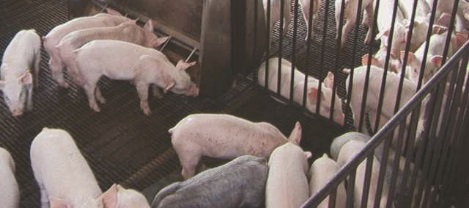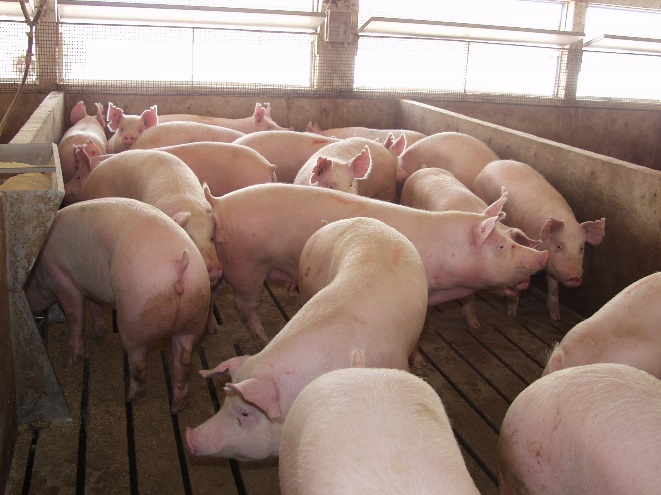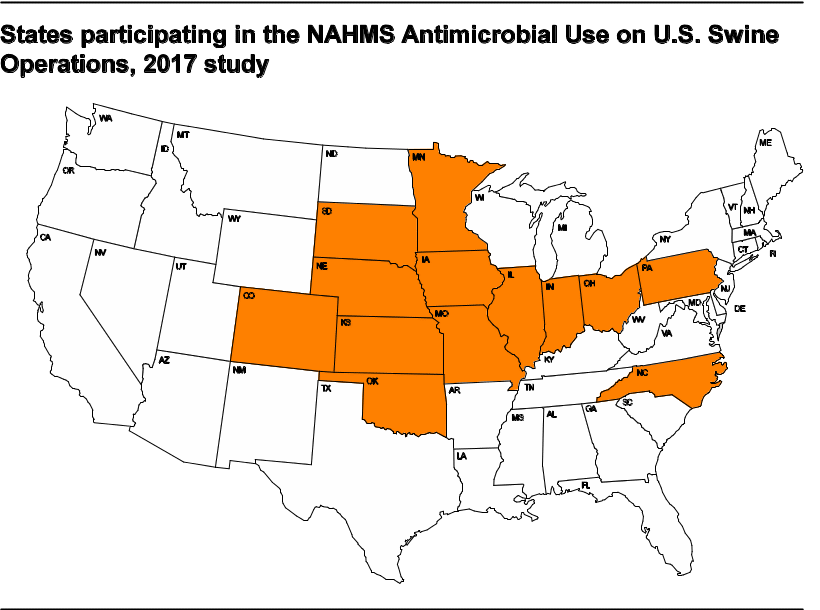Private Sector
National Animal Health Monitoring System; Antimicrobial Use Studies
Swine-LaunchInfoSheet
Private Sector
OMB: 0579-0462
April
2017



NAHMS Antimicrobial Use on U.S. Swine Operations, 2017 Study
From May through August 2017, the USDA’s National Animal Health Monitoring System (NAHMS), in collaboration with the National Agricultural Statistics Service (NASS), will conduct a national study focusing on how antimicrobials are used on swine operations in the United States. The NAHMS Antimicrobial Use on U.S. Swine Operations, 2017 study represents a new data collection and reporting effort for NAHMS, intended to be repeated biennially. In particular, the study will examine antimicrobial use and stewardship practices on swine nursery and grower-finisher facilities with a capacity of at least 1,000 head.
Background
The USDA Antimicrobial Resistance Action Plan, released in 2015, recommended that USDA agencies perform enhanced monitoring of antimicrobial use in food-producing animals. In addition, beginning on January 1, 2017, the Food and Drug Administration (FDA) initiated policy changes regarding the use of antimicrobials in food-producing animals. These changes include
Eliminating the use of medically important antimicrobials for growth promotion purposes in food-producing animals, and
Requiring veterinary oversight for use of medically important antimicrobials in animal feed or water.
Study Objectives
The NAHMS Antimicrobial Use on U.S. Swine Operations, 2017 study will gather information on antimicrobial-use practices in 2016, before implementation of FDA policy changes. Specific objectives of the study follow:
Describe antimicrobial-use practices in feed and water on production sites with a capacity of at least 1,000 weaned market pigs.
Estimate the percentage of production sites using and the percentage of weaned market pigs receiving specific antimicrobials in feed and/or water by reasons for use.
Provide baseline data on antimicrobial-use practices in place before implementation of FDA policy changes. This baseline can be used for evaluating trends over time.
Describe antimicrobial stewardship practices on production sites with weaned market pigs.

“We’ve
always been committed to improving in a number of areas, especially
regarding responsible antimicrobial use. We look forward to
receiving the data provided by the upcoming NAHMS study, which will
help inform us and the public on the antibiotic stewardship taking
place on U.S. pig farms. Brad
Greenway, 
Pig farmer from South Dakota and
America’s
Pig Farmer of the Year
Study
activities
Swine nursery and grower-finisher operations with an inventory of at least 1,000 head in 13 States (see map above) will be contacted and asked to provide information on antimicrobial use and stewardship practices. No biologic testing will be performed. The timeline for the study follows:
In May 2017, representatives from NASS will contact swine operations to inquire about their interest in participating in the study. NASS’ role will be to obtain producers’ consent for study participation.
Beginning July 2017, swine producers who agreed to participate in the study will be contacted by APHIS personnel to schedule an in-person interview, which will be conducted by an APHIS veterinarian.
Data collection will end in August 2017.
How the U.S. pork industry and swine producers will benefit from participating in the study
Information on antimicrobial-use practices will provide transparency to consumers and others regarding why antimicrobials are used in swine feed and/or water.
Information will also be provided on the percentage of operations using specific antimicrobials in swine feed and/or water.
Information from this study will provide a national snapshot of antimicrobial stewardship practices, such as recordkeeping related to antimicrobial use and whether a veterinarian was consulted when making the decision to use antimicrobials.
“The
information gathered by the NAHMS study on antibiotic use will help
us assure our customers that we use antibiotics responsibly and
demonstrate that we are implementing the changes in Guidance 213
and the VFD rule.” Liz
Wagstrom, DVM, MS, DACVPM Chief
Veterinarian, NPPC
A Scientific Approach
NAHMS collects and reports accurate and useful information on animal health and management in the United States. Since 1990, NAHMS has developed national estimates on disease prevalence and other factors related to the health of U.S. beef cattle, sheep, goat, dairy cattle, swine, equine, poultry, and catfish populations. The science-based results produced by NAHMS have proven to be of considerable value to the U.S. livestock, poultry, and aquaculture industries as well as to other animal health stakeholders. NAHMS studies are
National in scope,
Science based,
Statistically valid,
Collaborative,
Voluntary, and
Confidential.
Confidentiality
NAHMS is a statistical unit under the Confidential Information Protection and Statistical Efficiency Act (CIPSEA). All information acquired during the Antimicrobial Use on U.S. Swine Operations, 2017 study will be used for statistical purposes only and will be treated as confidential in accordance with CIPSEA guidelines. Only summary estimates based on the inference population will be reported. Data collected under CIPSEA are protected from Freedom of Information (FOIA) Requests.
For more information, contact:
USDA–APHIS–VS–CEAH
NRRC Building B, M.S. 2E7
2150 Centre Avenue
Fort Collins, CO 80526-8117
970.494.7000
Email: [email protected]
Or visit NAHMS at: http://nahms.aphis.usda.gov
#634.0417
____________________________________
The U.S. Department of Agriculture (USDA) prohibits discrimination in all its programs and activities on the basis of race, color, national origin, age, disability, and where applicable, sex, marital status, familial status, parental status, religion, sexual orientation, genetic information, political beliefs, reprisal, or because all or part of an individual’s income is derived from any public assistance program. (Not all prohibited bases apply to all programs.) Persons with disabilities who require alternative means for communication of program information (Braille, large print, audiotape, etc.) should contact USDA’s TARGET Center at (202) 720–2600 (voice and TDD). To file a complaint of discrimination, write to USDA, Director, Office of Civil Rights, 1400 Independence Avenue, S.W., Washington, D.C. 20250–9410, or call (800) 795–3272 (voice) or (202) 720–6382 (TDD). USDA is an equal opportunity provider and employer.
Photographs courtesy of the National Pork Board
 United
States Department of Agriculture • Animal and Plant
Health Inspection Service • Safeguarding
American Agriculture
United
States Department of Agriculture • Animal and Plant
Health Inspection Service • Safeguarding
American Agriculture
| File Type | application/vnd.openxmlformats-officedocument.wordprocessingml.document |
| Author | chaley |
| File Modified | 0000-00-00 |
| File Created | 2021-01-22 |
© 2025 OMB.report | Privacy Policy